I’m trying to catch up on my winter season, this is part 2. To read about the red squirrels please check out part 1.
In this blog I’m going to cover the wildlife enjoyed by my winter wildlife clients and myself in a fantastic pinewood. Within this wood I have set up a couple of nut feeders and enjoy visits from many species: crested tits, long-tailed tits, coal tits, great tits, blue tits, chaffinches, robins, dunnock, treecreepers, goldcrest, wrens, bank voles, pygmy shrew and red squirrels. Over the winter months there is so much going on, it’s brilliant!
The official stars of the site are the crested tits (Lophophanes cristatus). I have a pair that visit regularly. These are great little birds – stunning to look at with their crests and colouring – very handsome I think. For most of the year cresties tend to live in the treetops eating the insects that live there, so it’s rare to see them at ground level. In the UK crested tits are only found in pockets of woodland in the Scottish Highlands, primarily in the East. They are a schedule 1 bird, so it’s illegal to cause them any disturbance during the breeding season too. However, over the winter, when their preferred food is scarce they do come down to feeders. The first indication of a crested tit’s approach is usually its distinctive call. I’m not great at bird calls (although I am getting better!), but this one is easy and it’s very useful. Cresties aren’t the easiest bird to photograph though as they jump between branches giving little opportunity to focus and photograph, before landing on the feeder. It’s good fun though! As the winter months progressed I improved my set up to make it a little easier for my clients to achieve good photographs of them.
Initially we attempted to photograph them on the conifer branches, and early in the season, before the old bracken collapsed I captured them there too, although they didn’t land on it very often!)

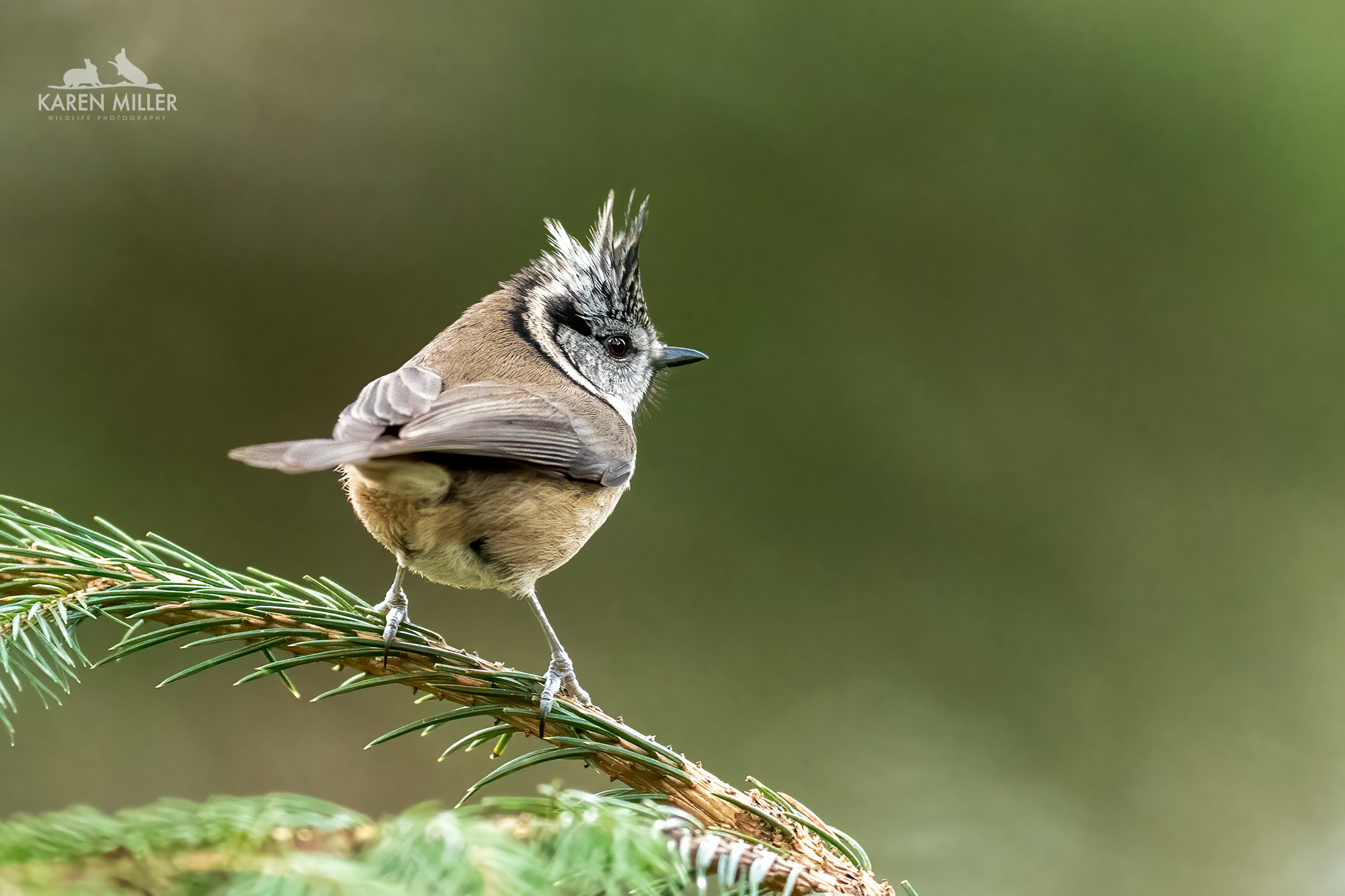


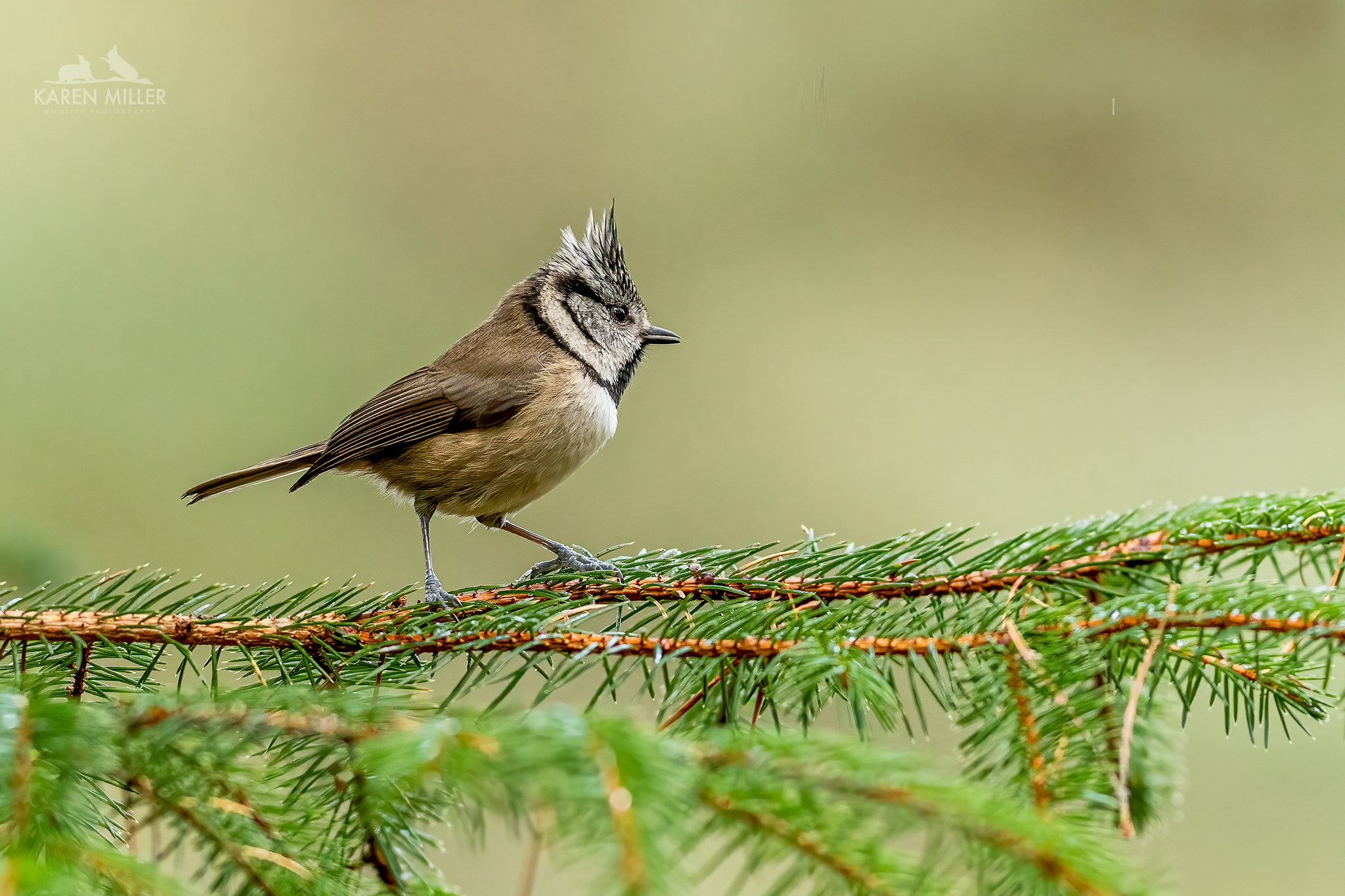

My crested tit pair are fair weather birds, so didn’t appear as often when there was snow as I’d have liked, but did show a few times.
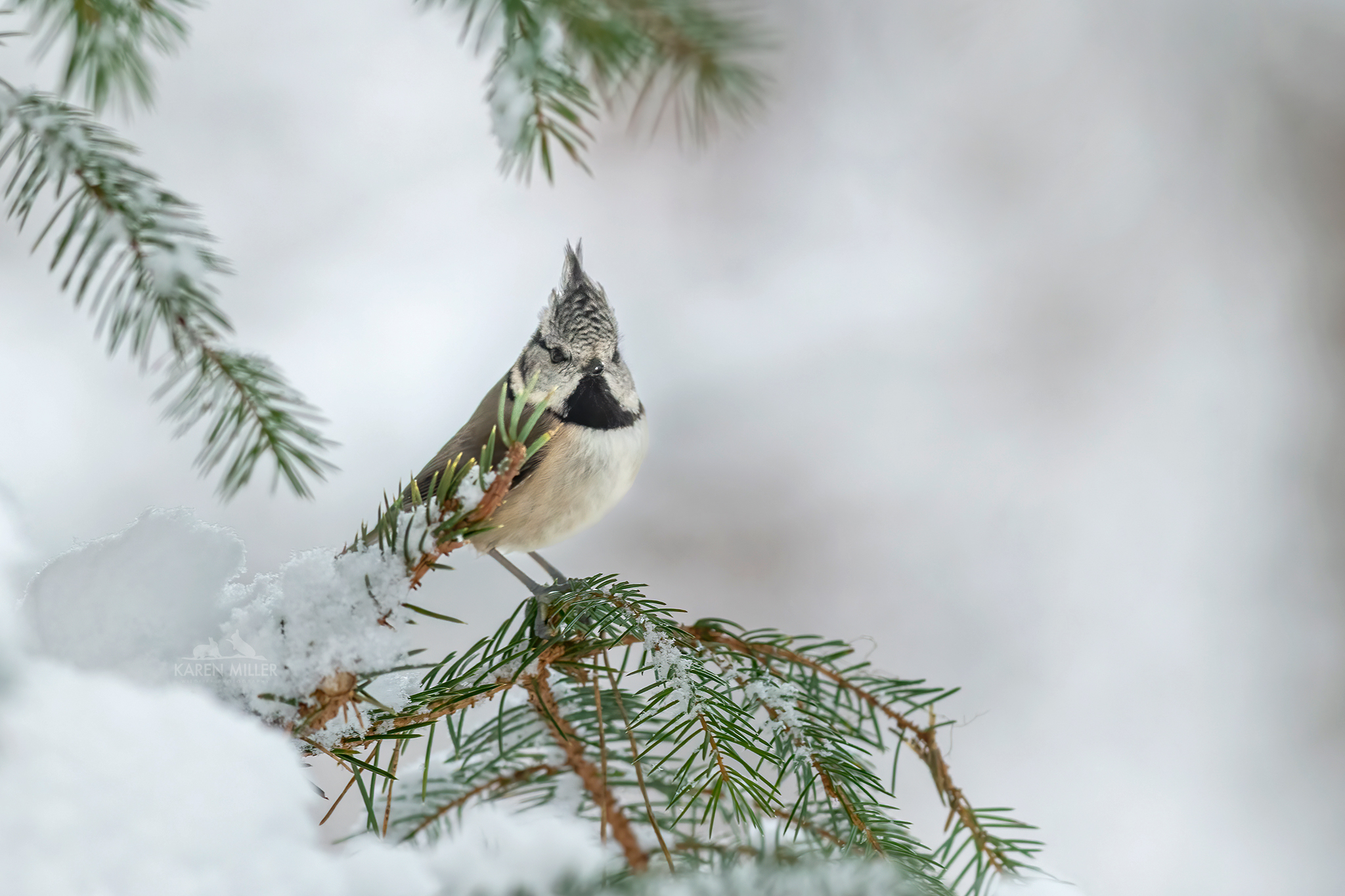

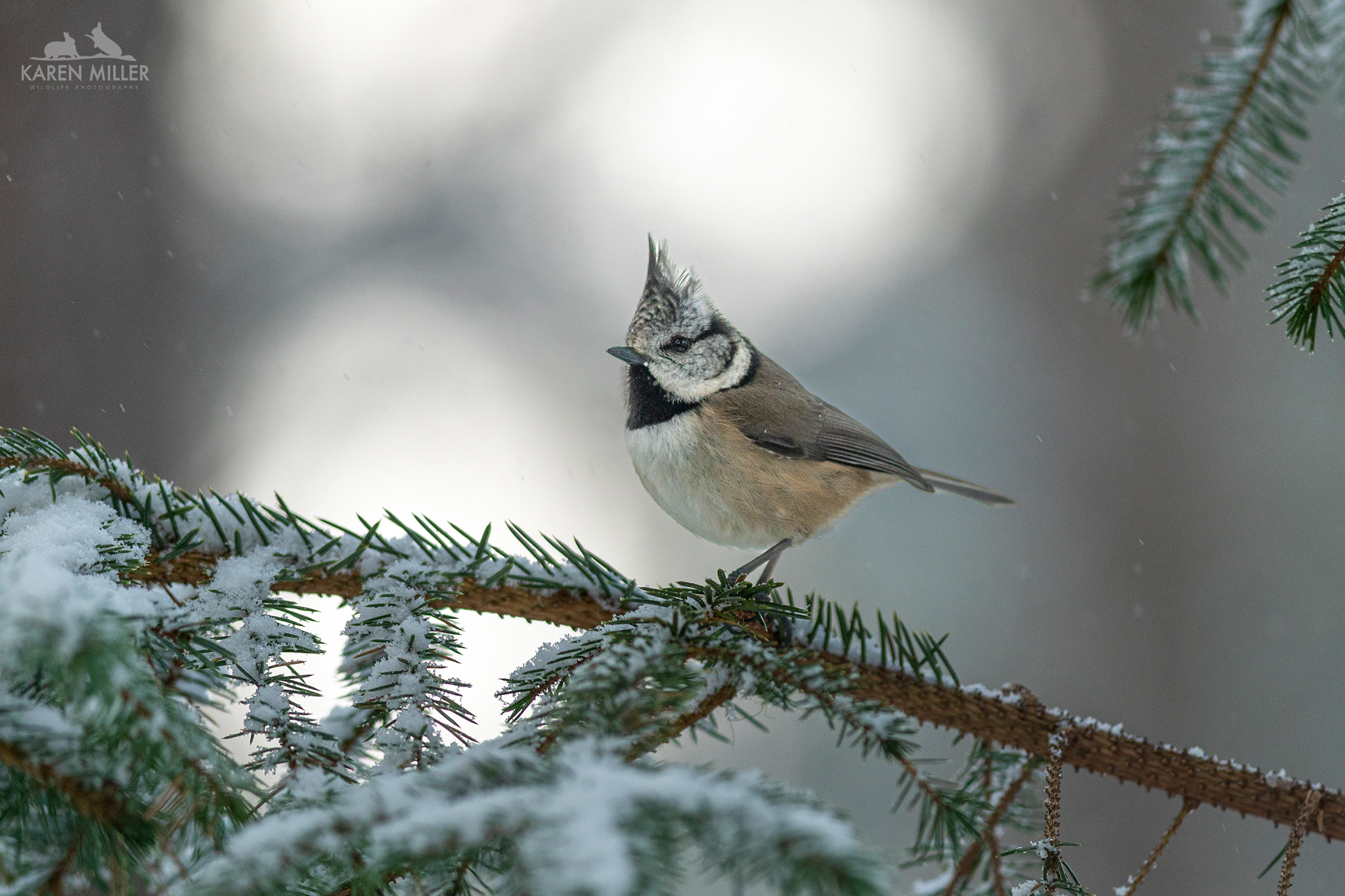
They mostly visited the feeders separately. On one occasion in early January, my client and I were in the process of packing up as the light was all but gone when two landed on a branch together. We both managed to photograph them… just! The light was terrible, so just as well for Topaz denoise!

The birds all love lard. So I used this in the cracks of the scots pine trees and, latterly, on a couple of fallen branches. This proved to be very successful as the crested tits would stop for a longer period of time giving more opportunities to photograph them.

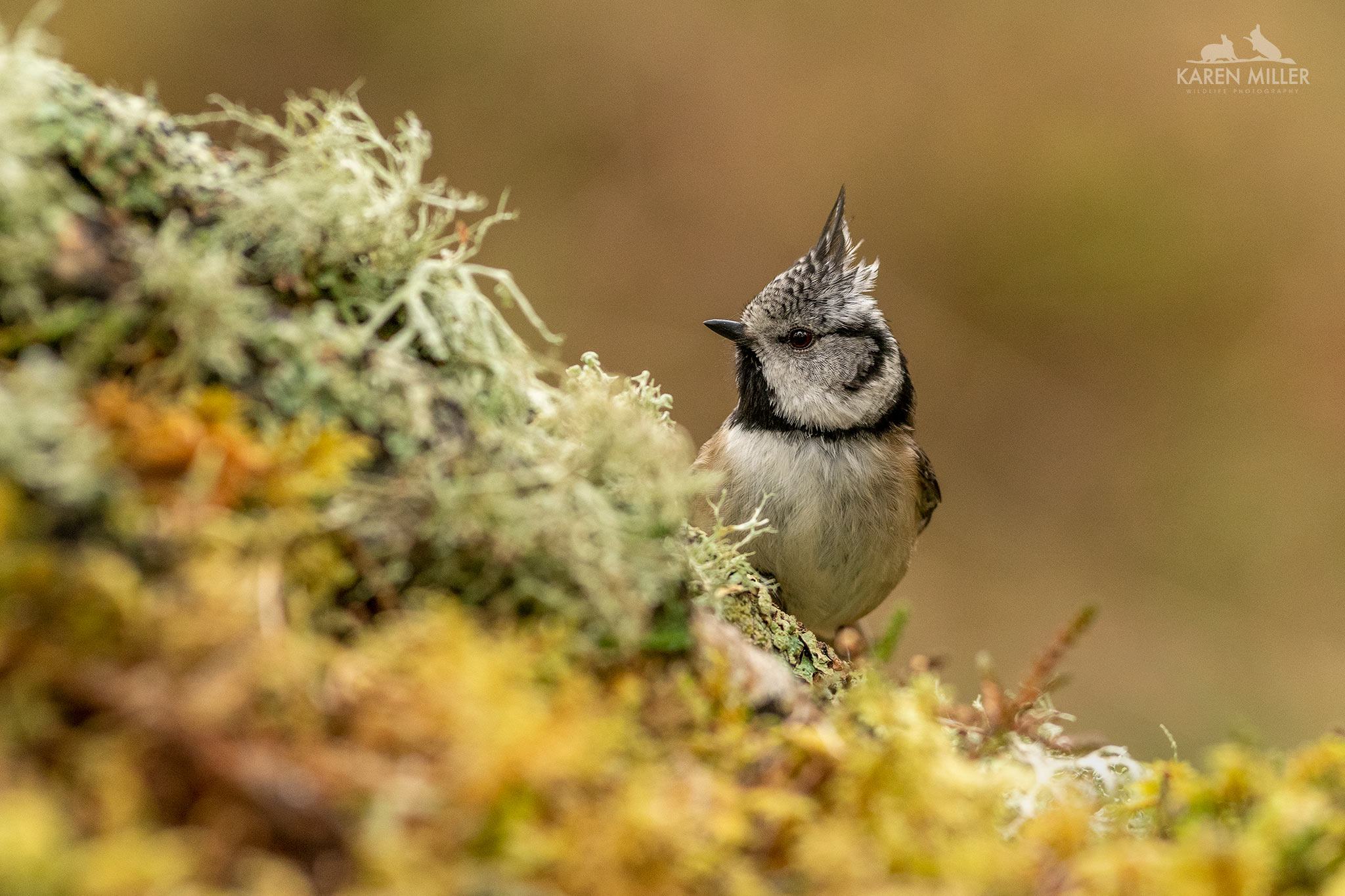


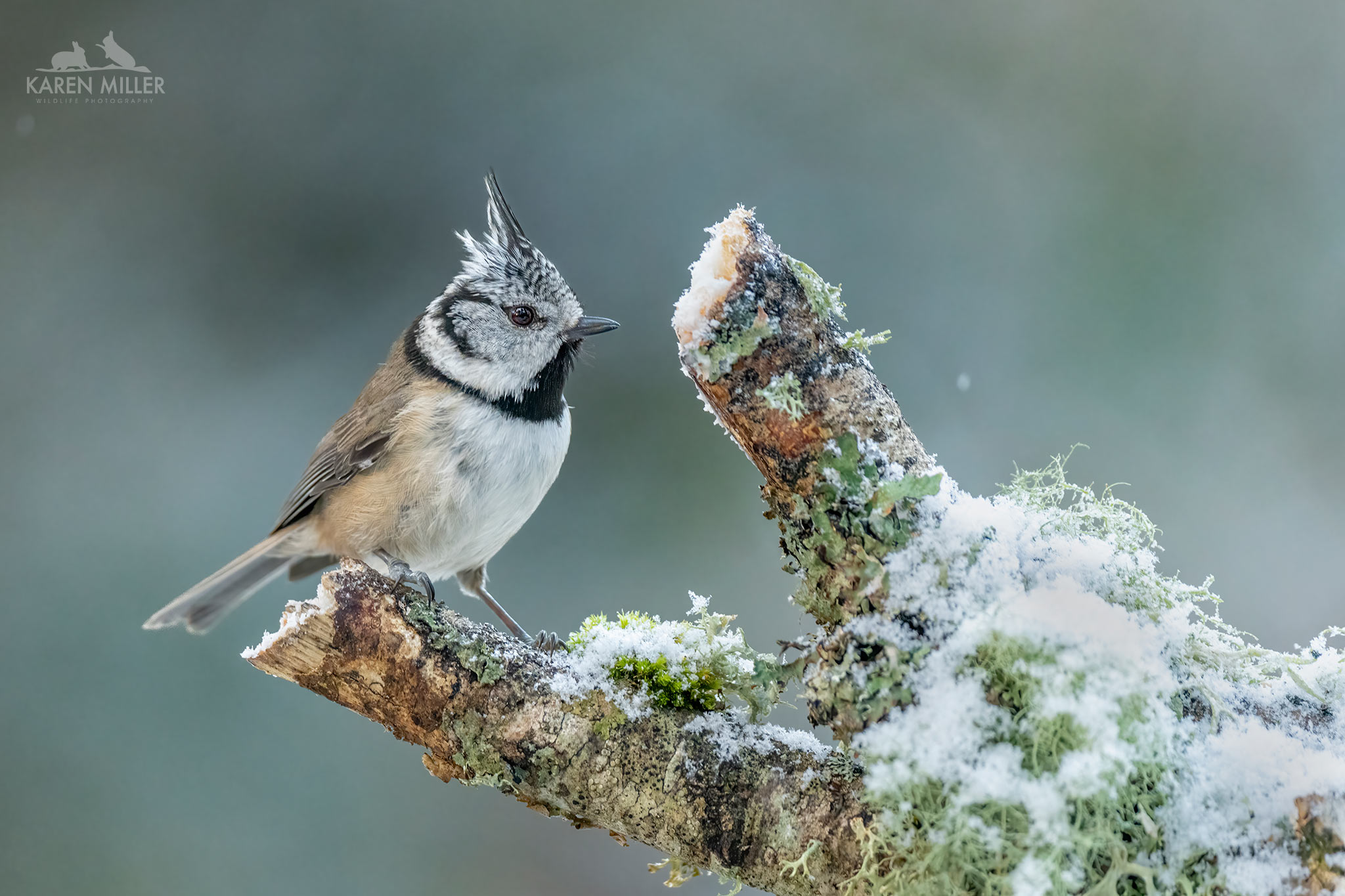
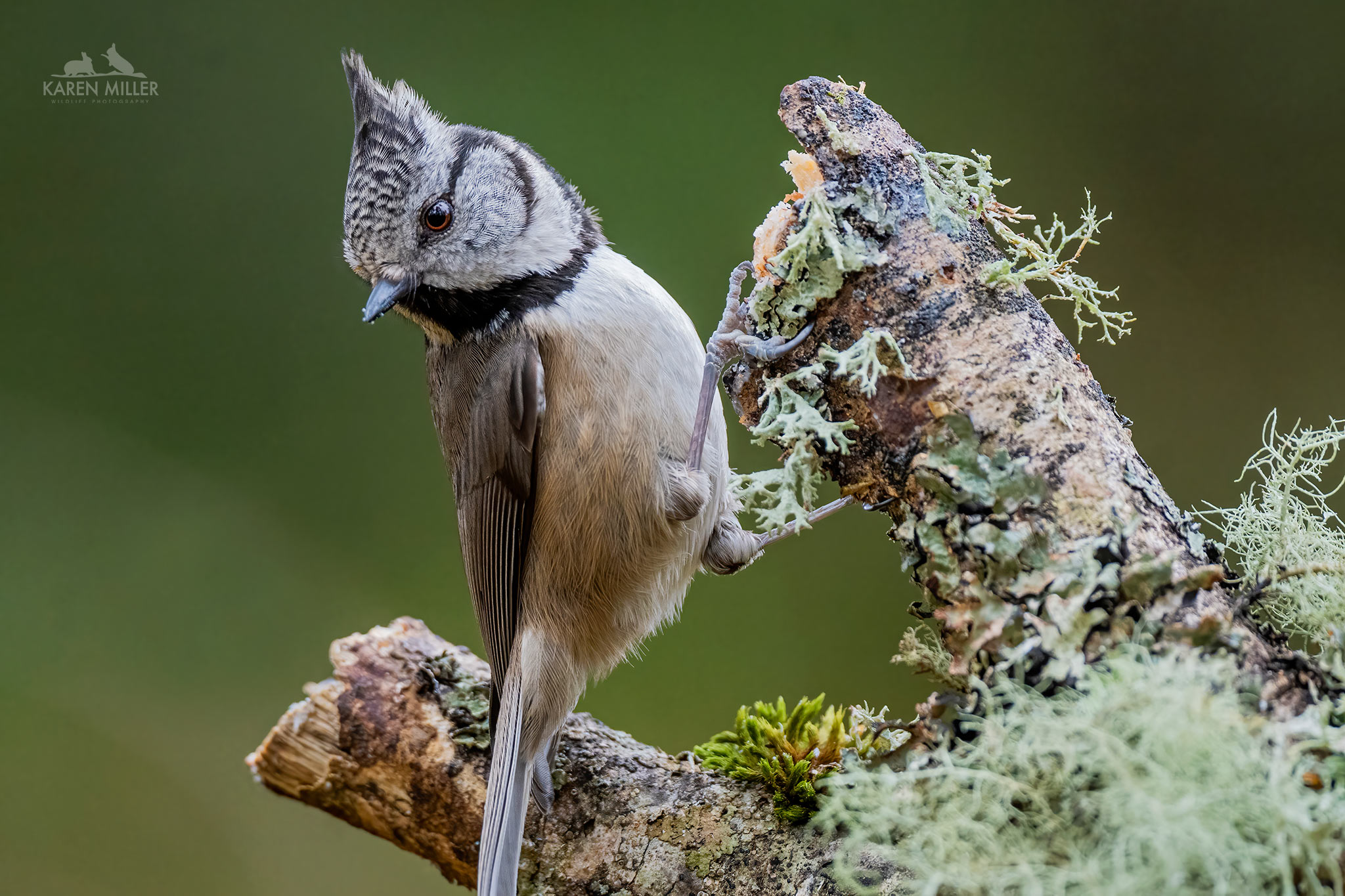
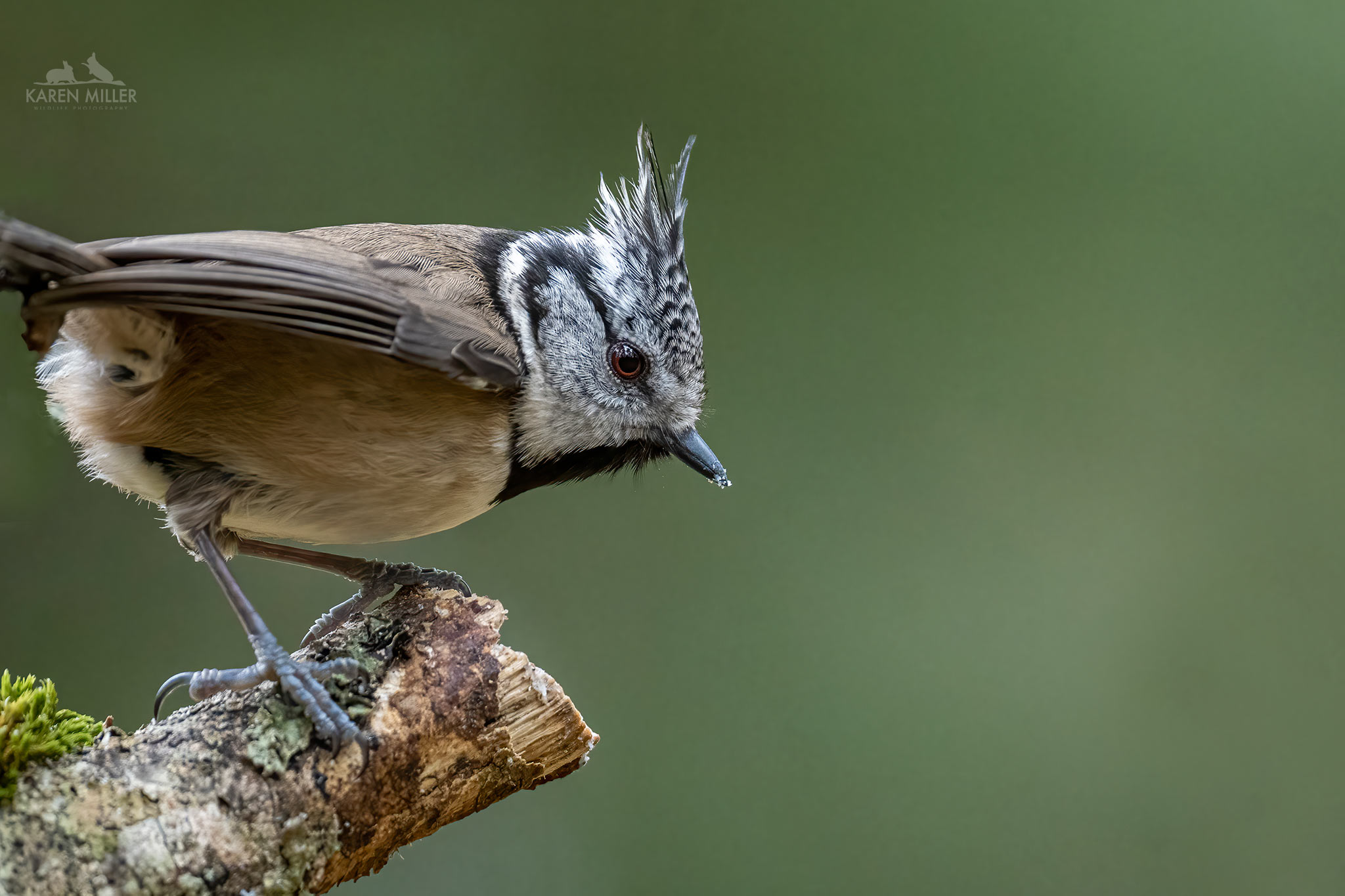
Two of my favourites from the season though were these two. Both taken in the trees and using the bokeh created by the light filtering through them.
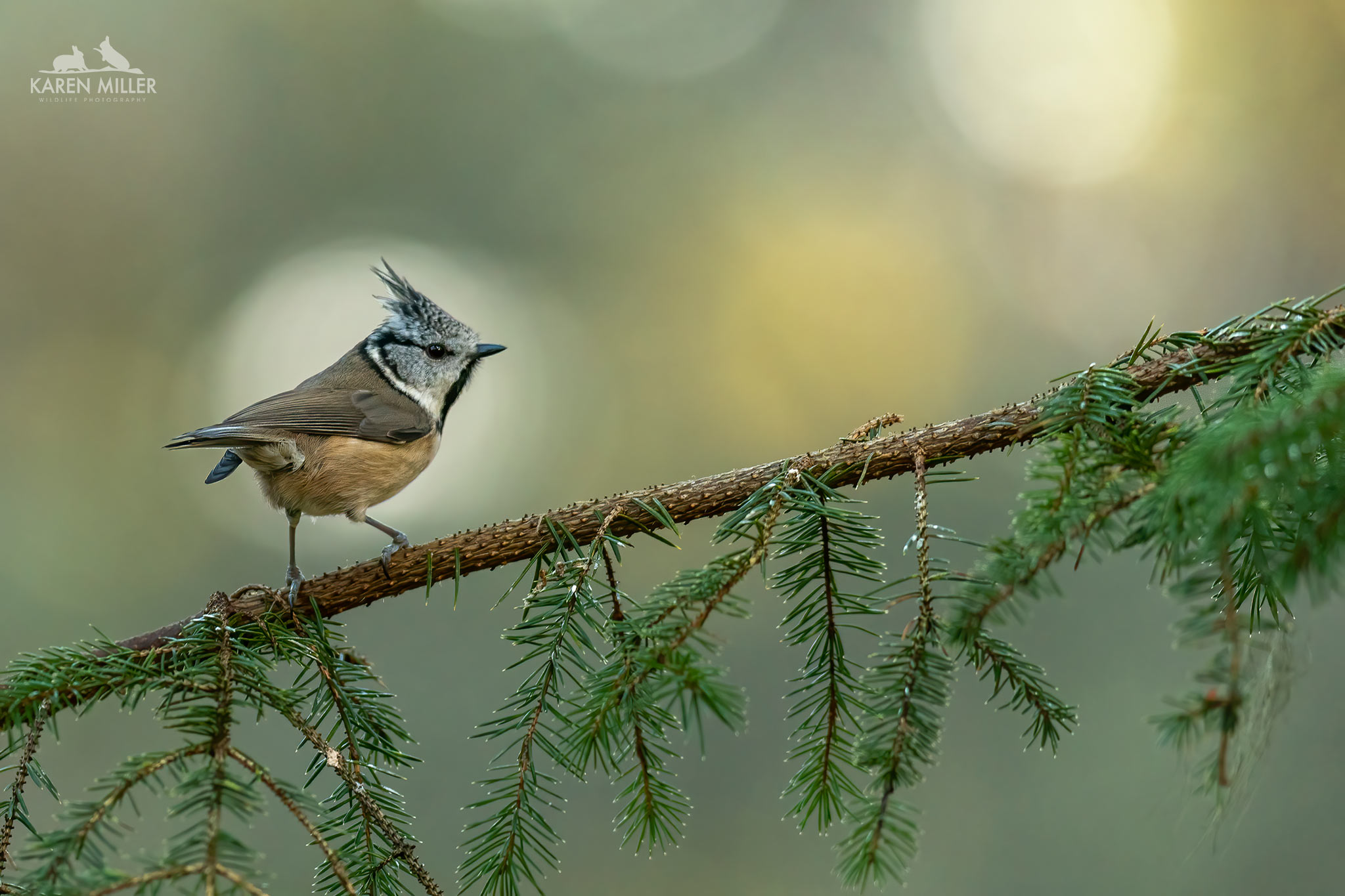
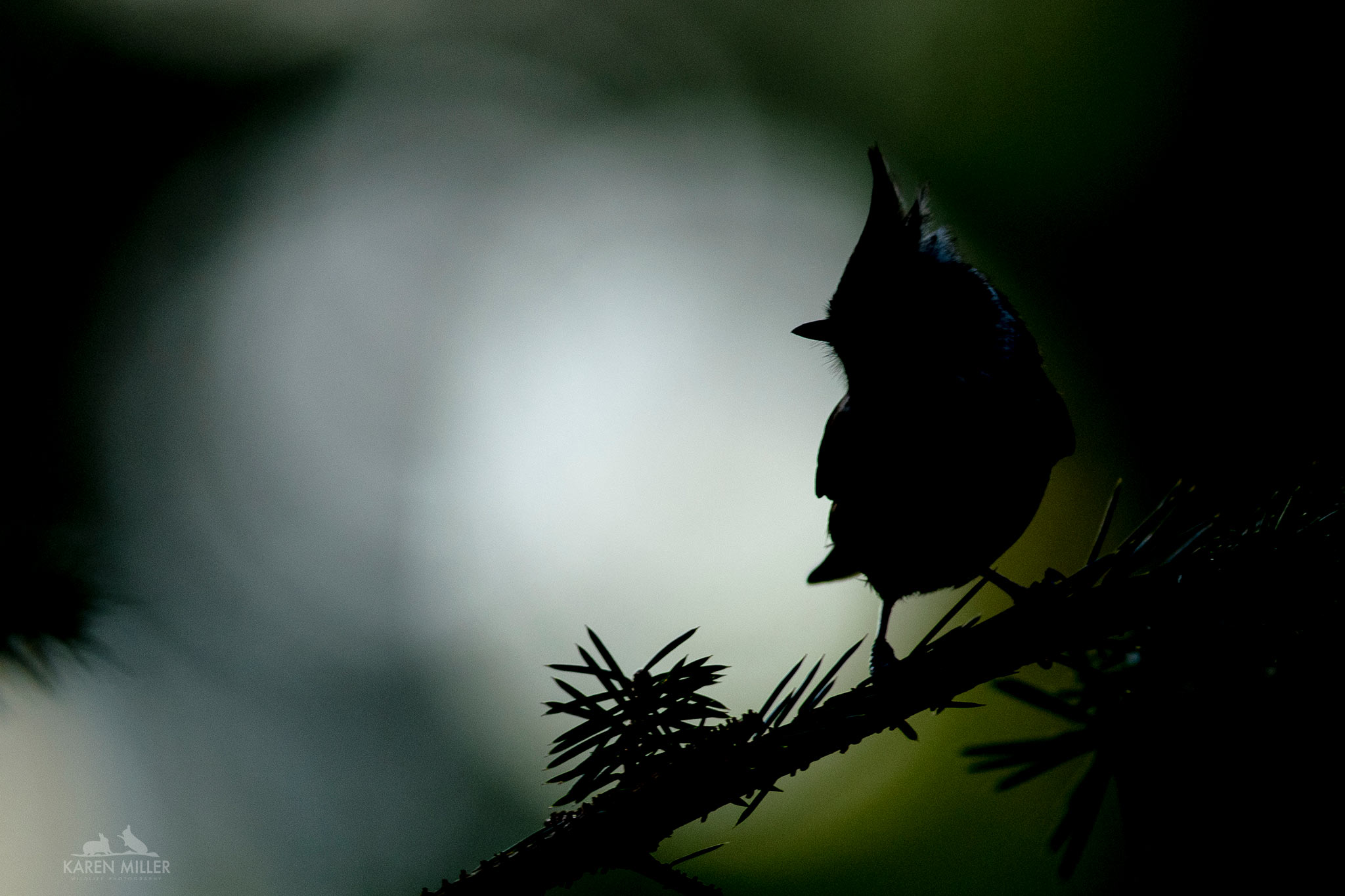
It’s always a shame when the cresties return to the treetops. They pretty much disappeared mid-March although I had a few brief visits until early April.
A very popular bird at the site was the long-tailed tit (Aegithalos caudatus). Certainly my favourite member of the tit family. At times they virtually moved in and were an almost constant presence, chattering amongst themselves and flitting between the branches. Unlike the cresties they had no problem appearing in more inclement weather. On one occasion I had a no-tailed tit appear – it looked very odd, no photos of it sadly!

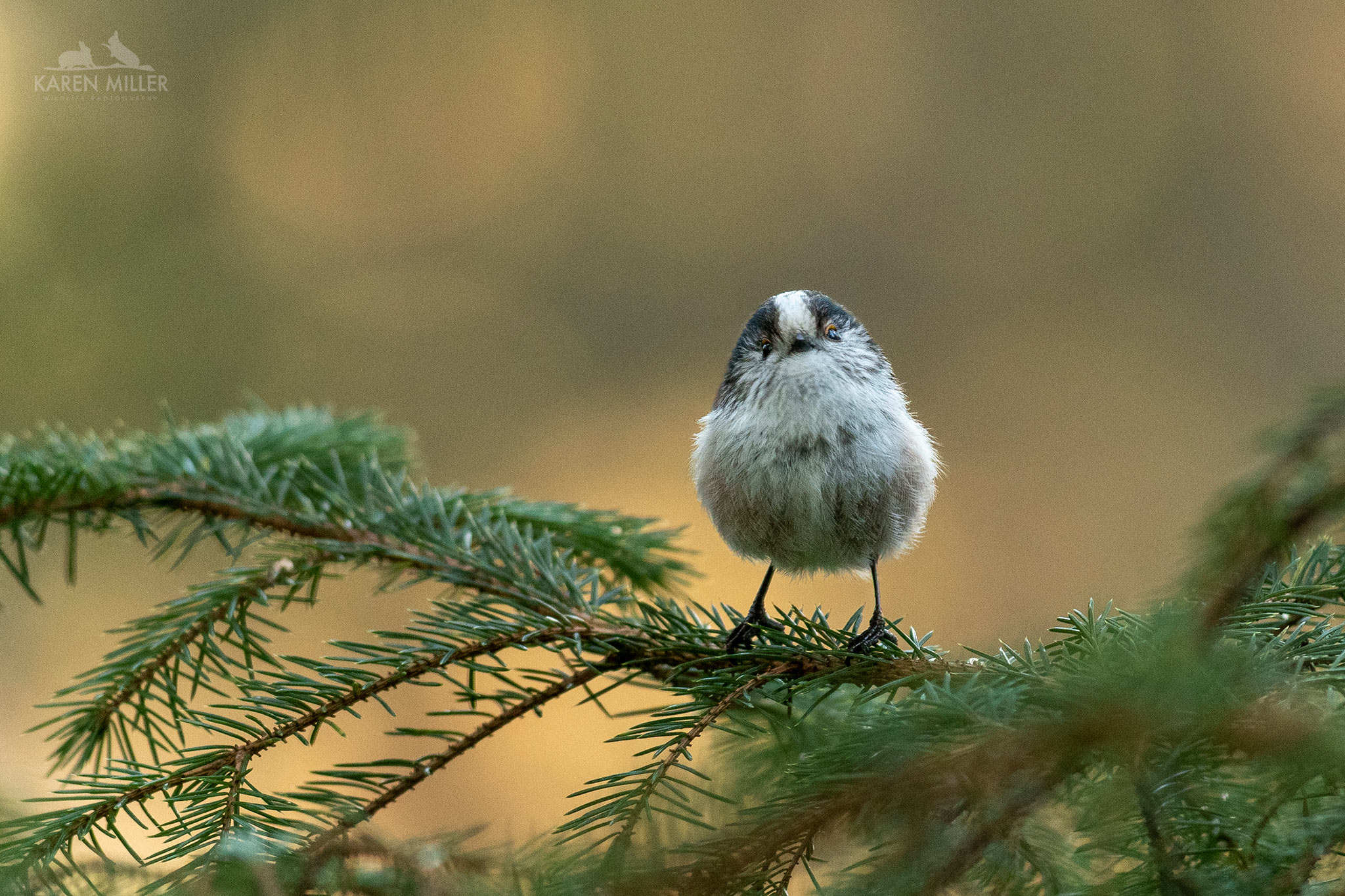
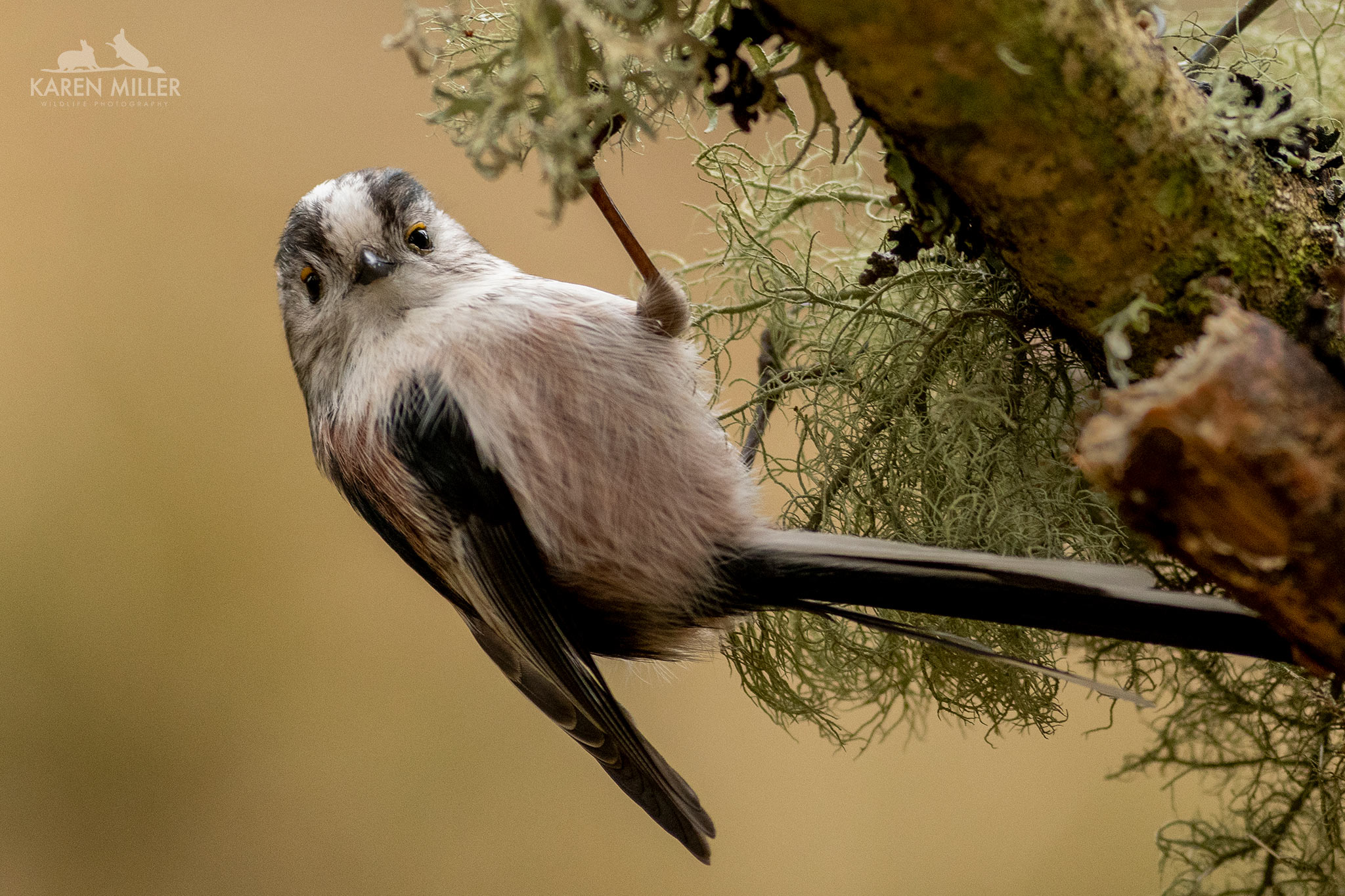


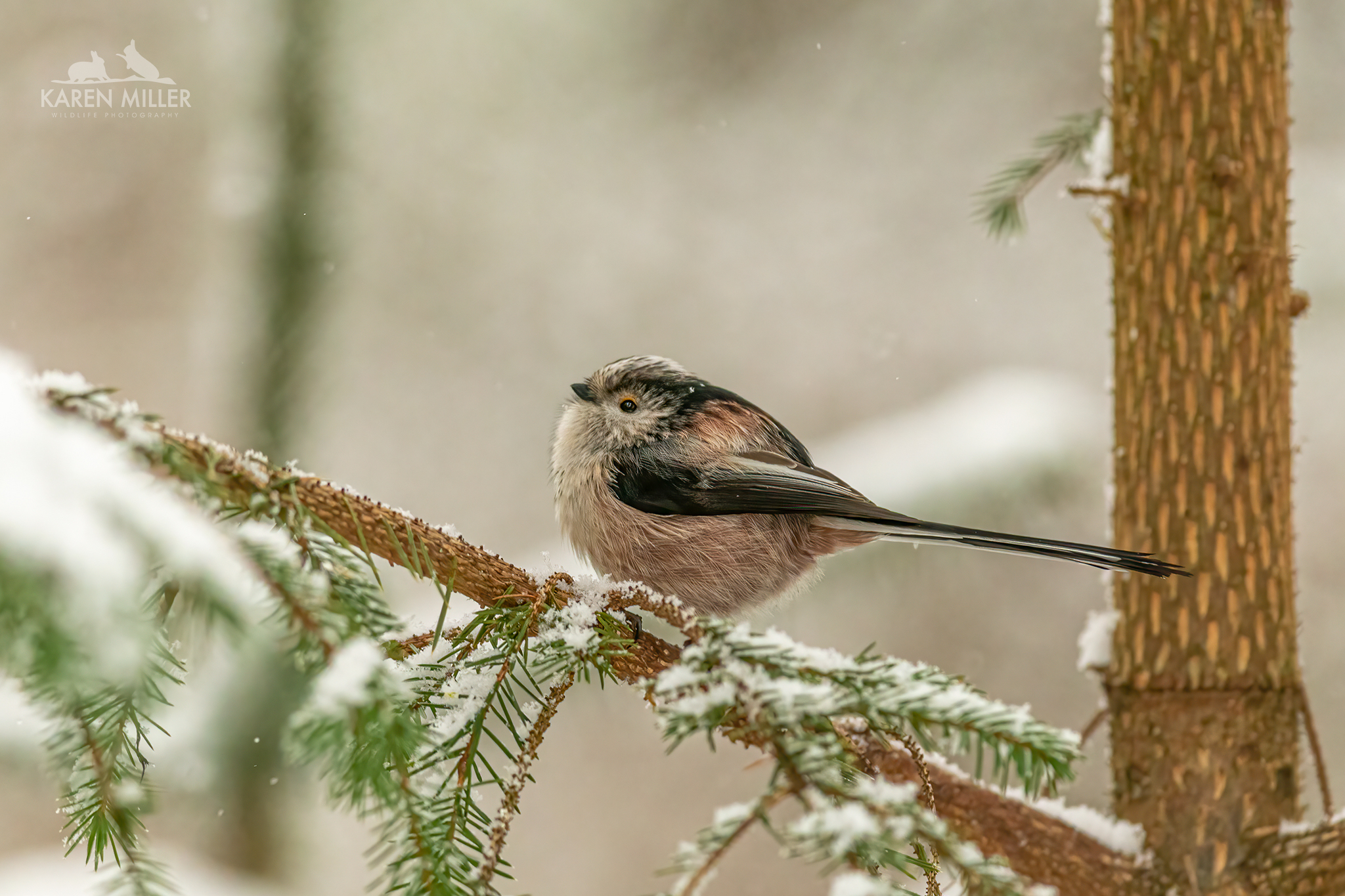
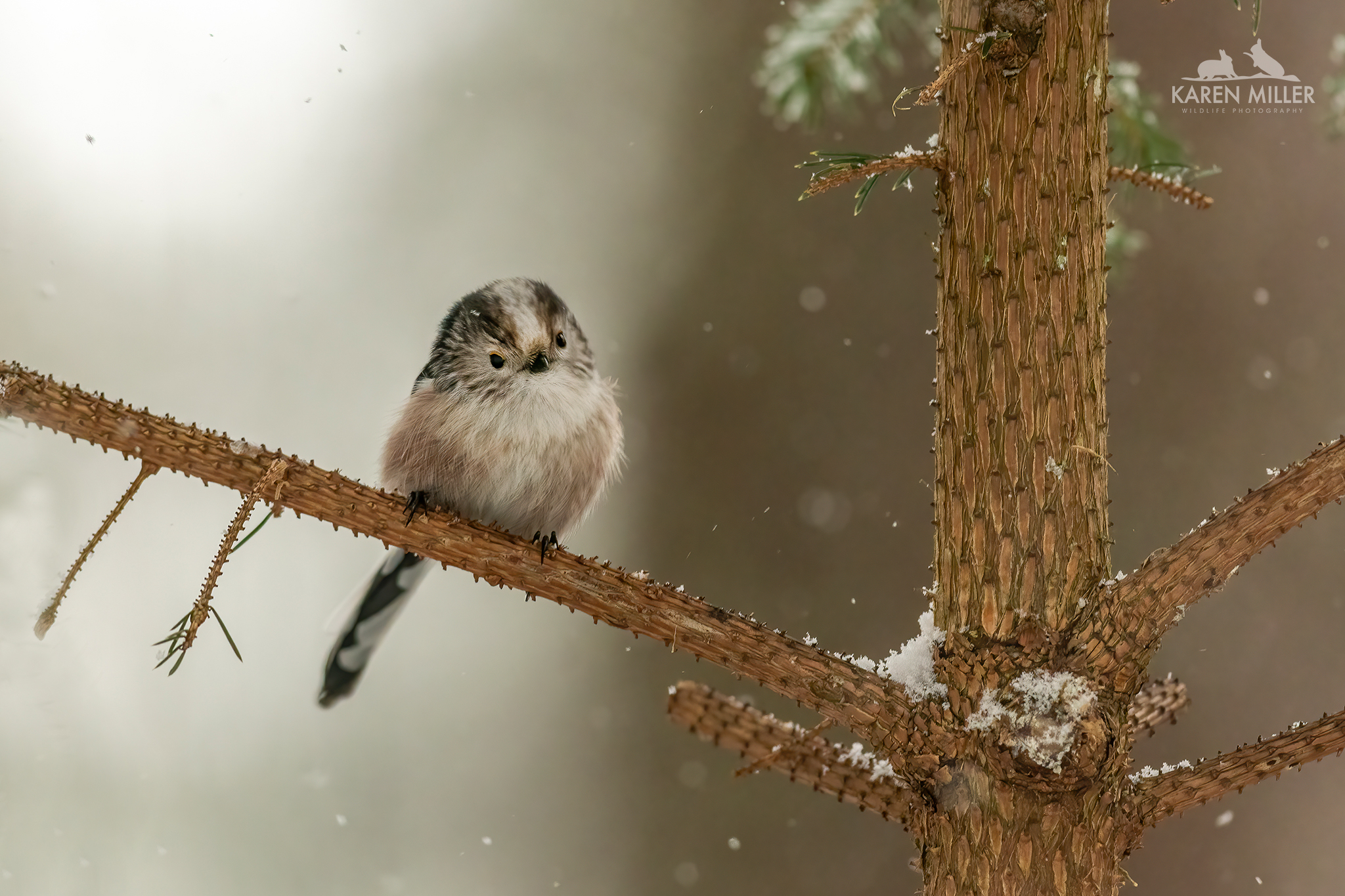
There were at least six robins visiting at one point. Great to watch as they split their time between fighting, posturing, eating and posing for the camera. I love when they puff themselves up.



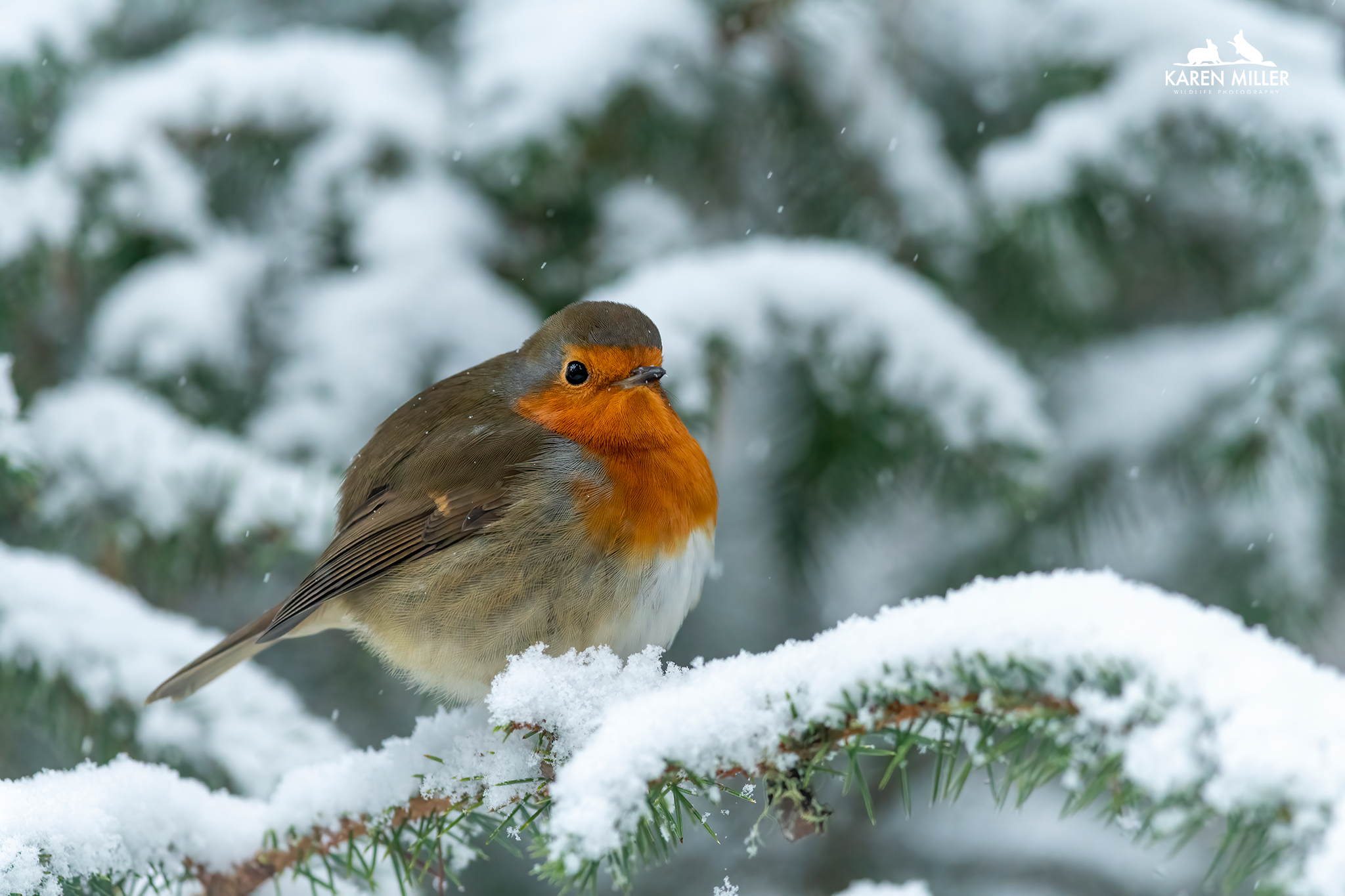
Plenty of other birds dropped in too. There were so many coal tits at times that the poor cresties couldn’t get near the feeders! Here’s a small selection. (I confess I didn’t really photograph the more common species.) Coal tit, treecreeper, goldcrest and wren.
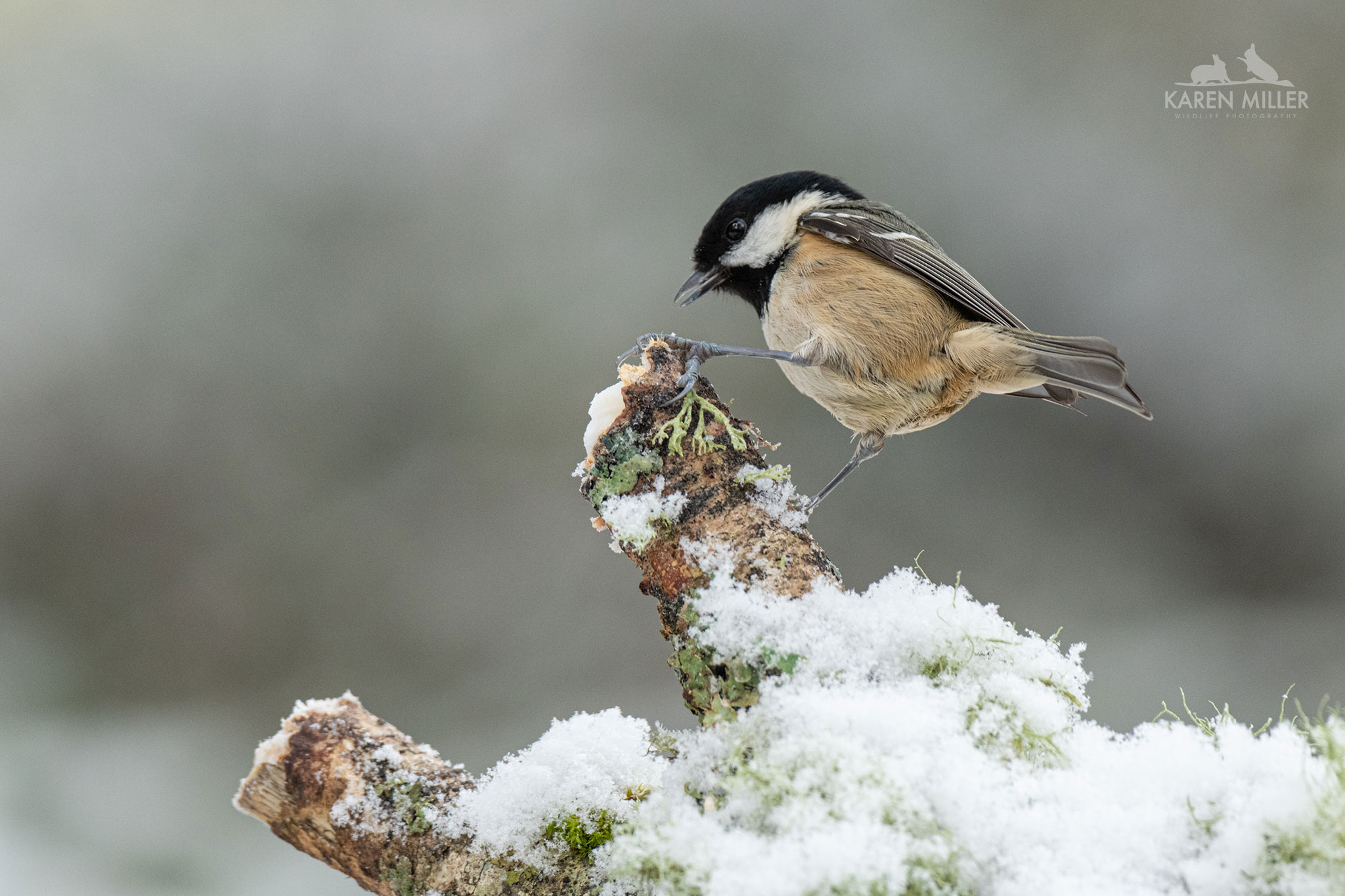
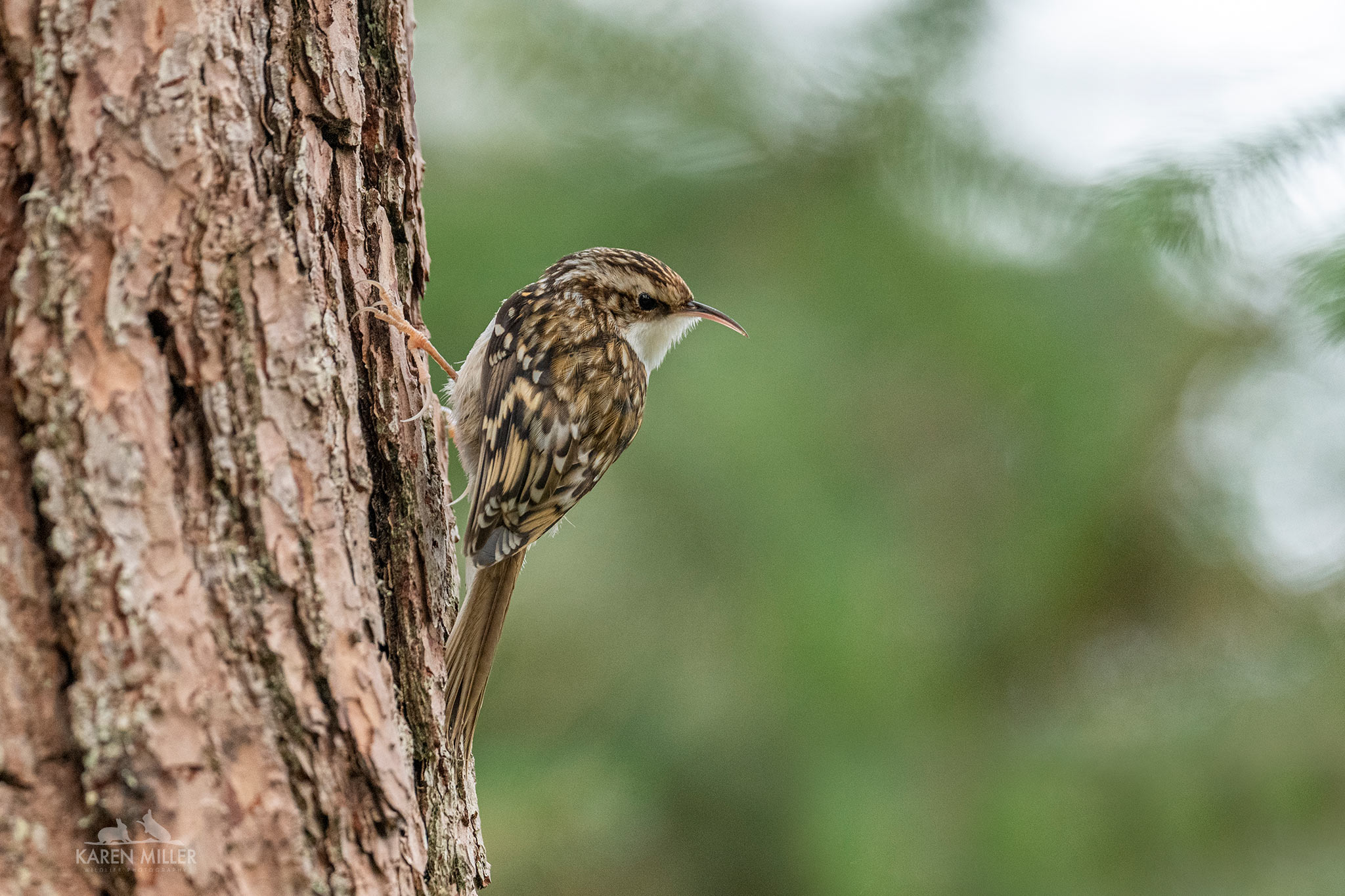
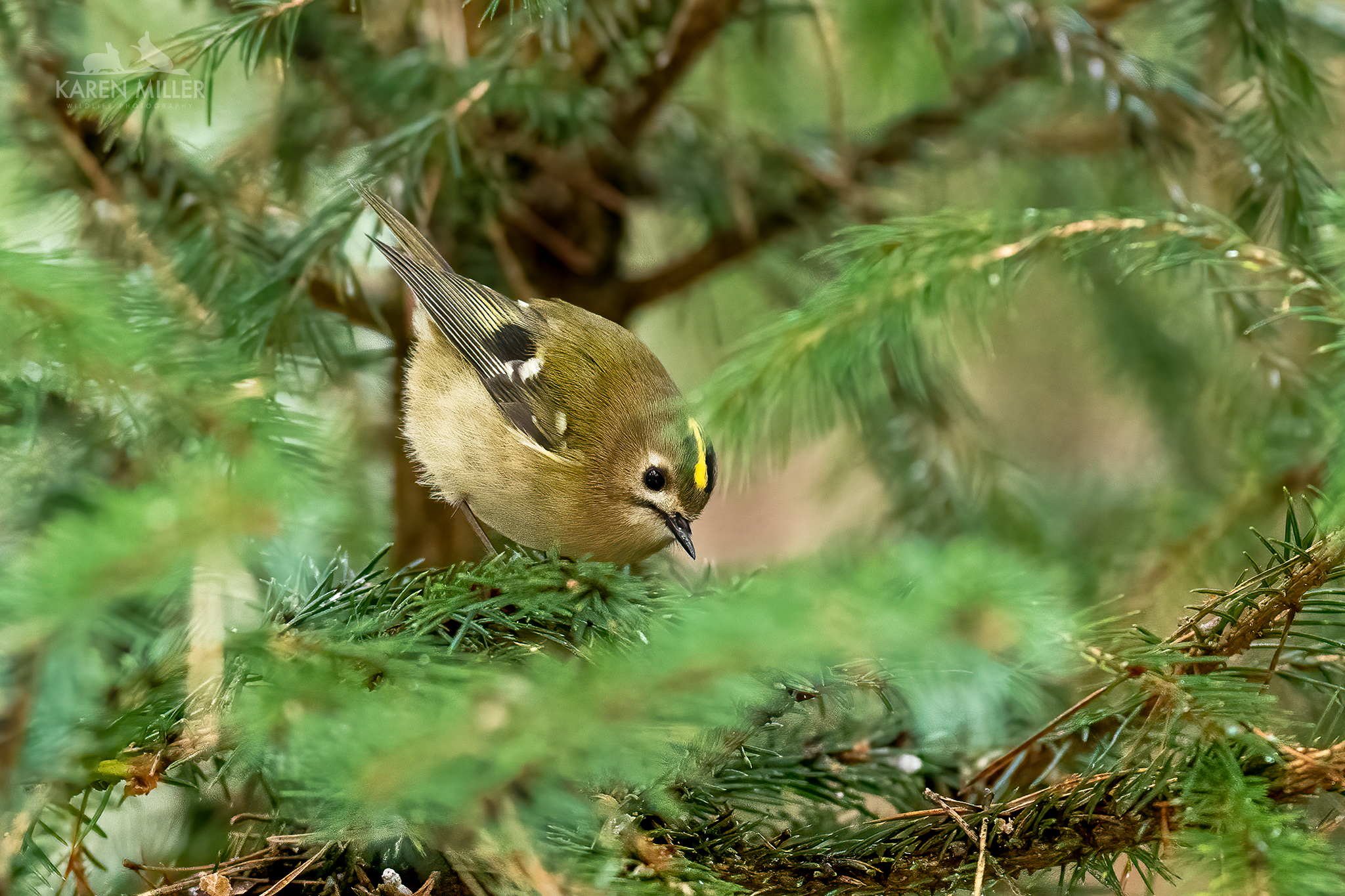
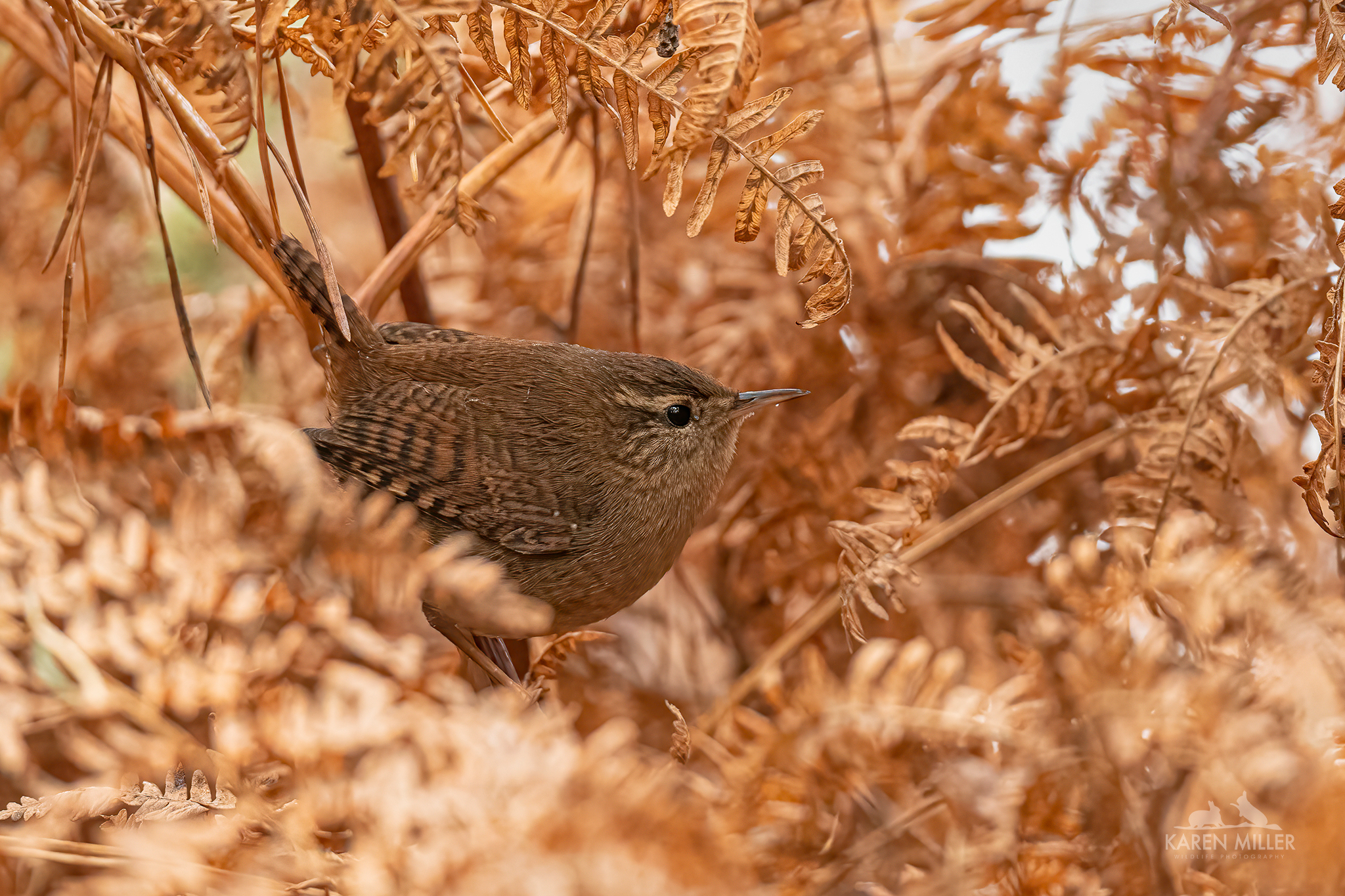
This isn’t officially a red squirrel site although at least four squirrels did take advantage of the feeders when we weren’t there. Every so often one would put any fear of humans to one side and come in – most of the time they sat in the trees clucking discontentedly.
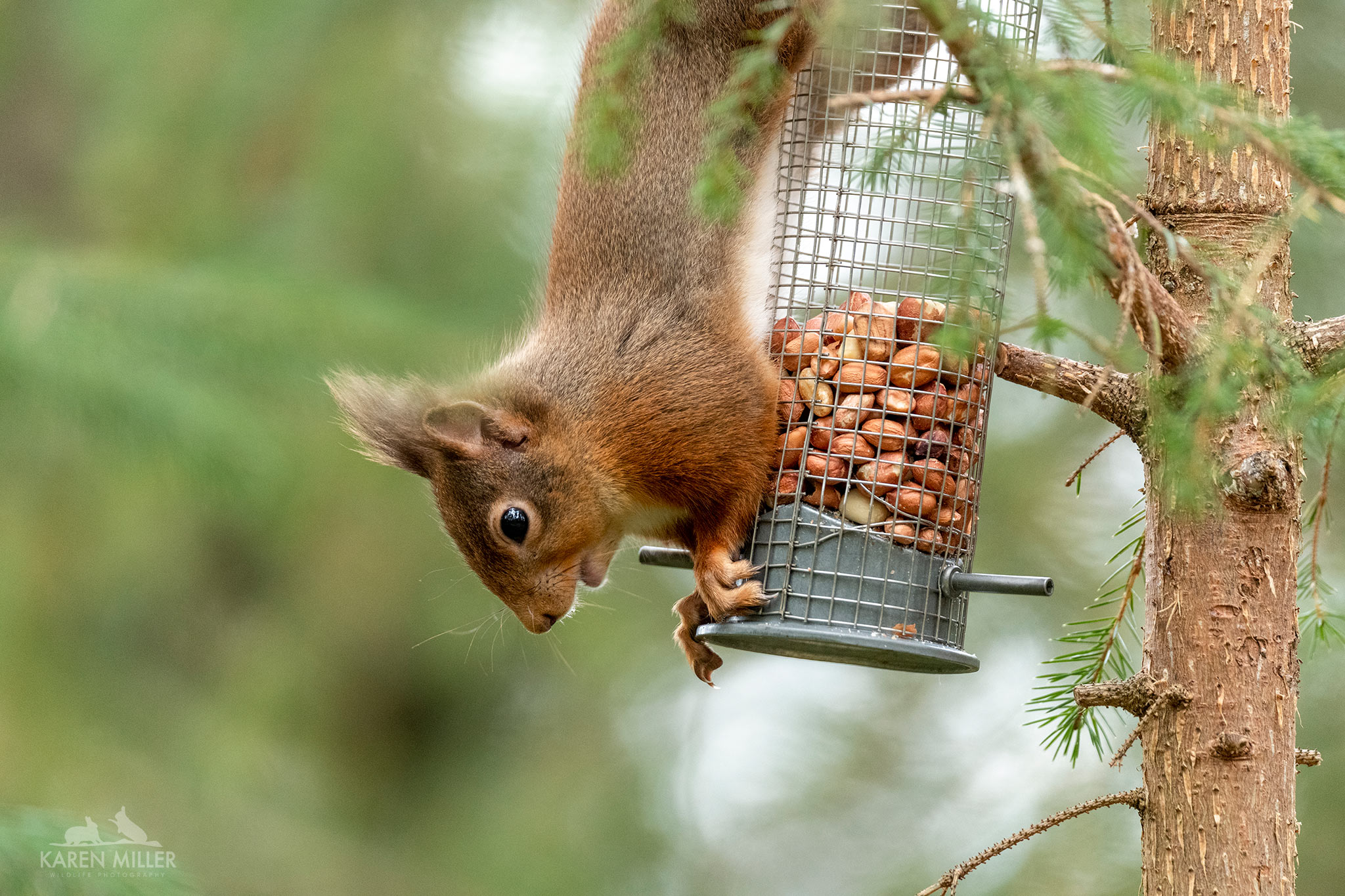
The unofficial stars of my pinewood site weren’t birds or squirrels. Although they are rodents – bank voles. I’ve mentioned them in previous blogs and they continued to delight clients throughout the winter months. Bank voles (Myodes glareolus) are one of our most common mammals but we don’t often see them out and about. Not surprising really as their primary reason for living is to feed those higher up the food tree – owls, birds of prey, pine martens etc all eat them. They are therefore very wary and can move incredibly quickly. There are a pair of voles living in the tree stumps close to where I hang the nut feeders for the birds. They inhabit a number of the stumps and dash between them at high speed, popping out of holes and disappearing again. The challenge I have had was how to keep them in sight for photographs.
Initially I was feeding them hazelnuts (coal tits would take away any peanuts I put out within seconds of me putting them out), but not only are these expensive, but the voles became too adept at picking them up and would then disappear for a while to cache them somewhere badger-proof. The advantage of hazelnuts was that I could see if a vole was active by checking whether or not the hazelnuts were still there as we often got distracted by the birds.
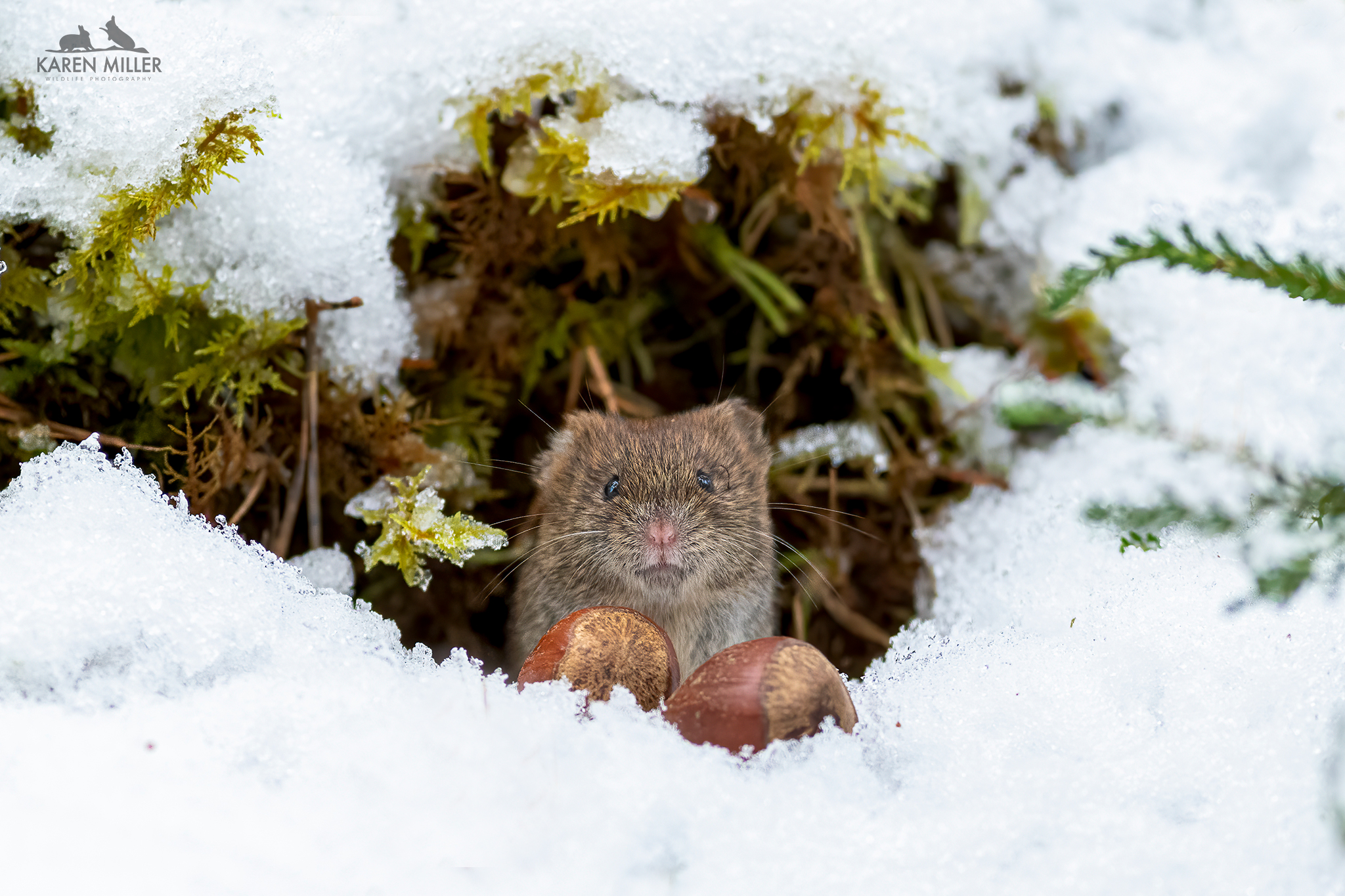
Just for fun I left a walnut out, and, amazingly, one of the voles, after a few attempts, ran off with it too! It was almost as big as the vole. Very impressive. They must have exceptionally sharp teeth.
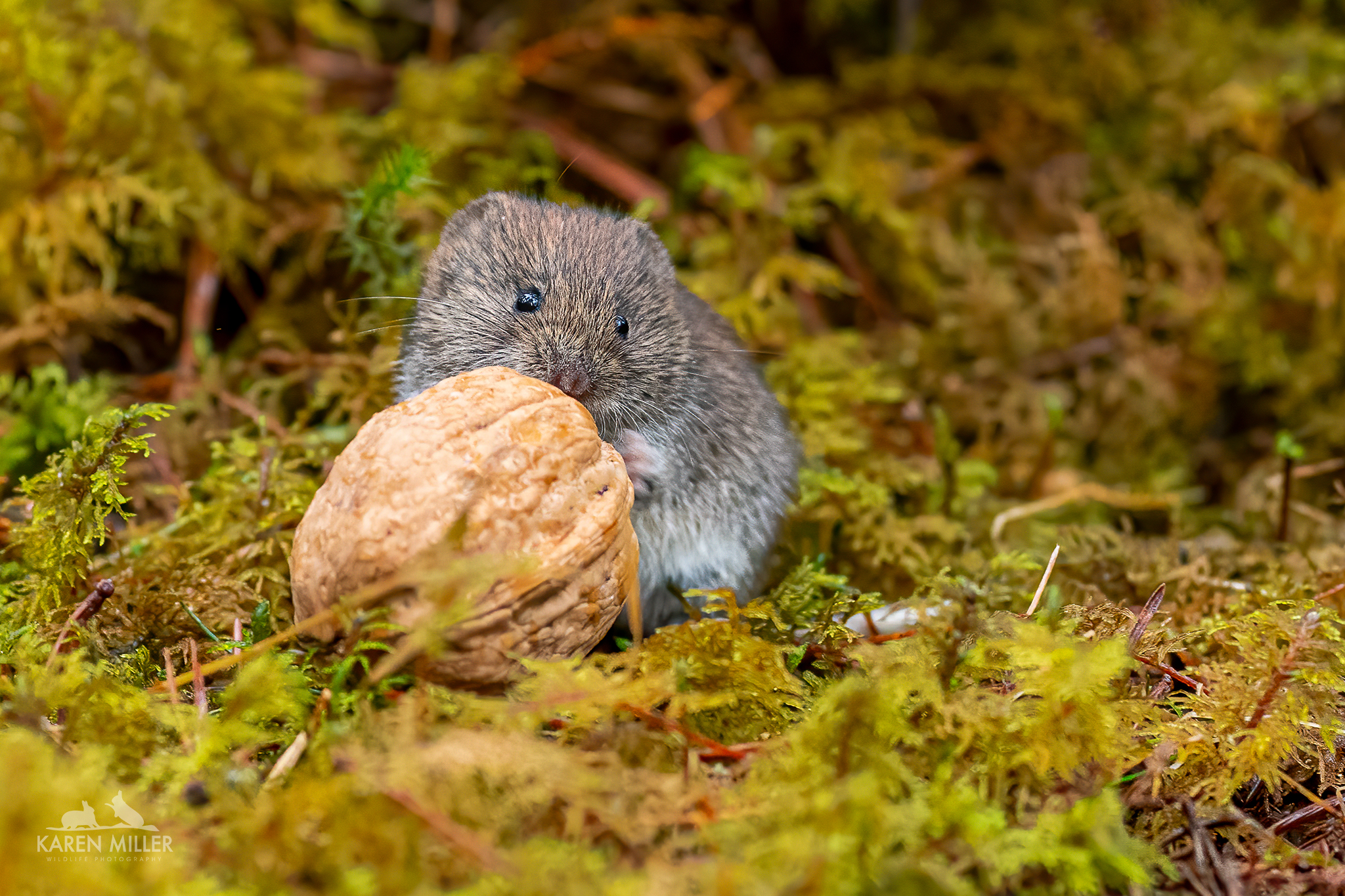
I then started putting out peanut butter (unsalted/unsweetened). In order to hide it in the photographs I’d smear it on a small piece of bark. However, it transpired robins were also keen on it, so would carry the whole lot off.

Another species partial to peanut butter are shrews. I was sitting watching the voles one afternoon when something brown and tiny darted in and out a few times. It was so quick I couldn’t make it out with my naked eye. Initially I thought (and hoped) it might be a baby vole, but eventually I was able to take one relatively sharp image and realised it was a pygmy shrew (Sorex minutus). Isn’t it adorable?!
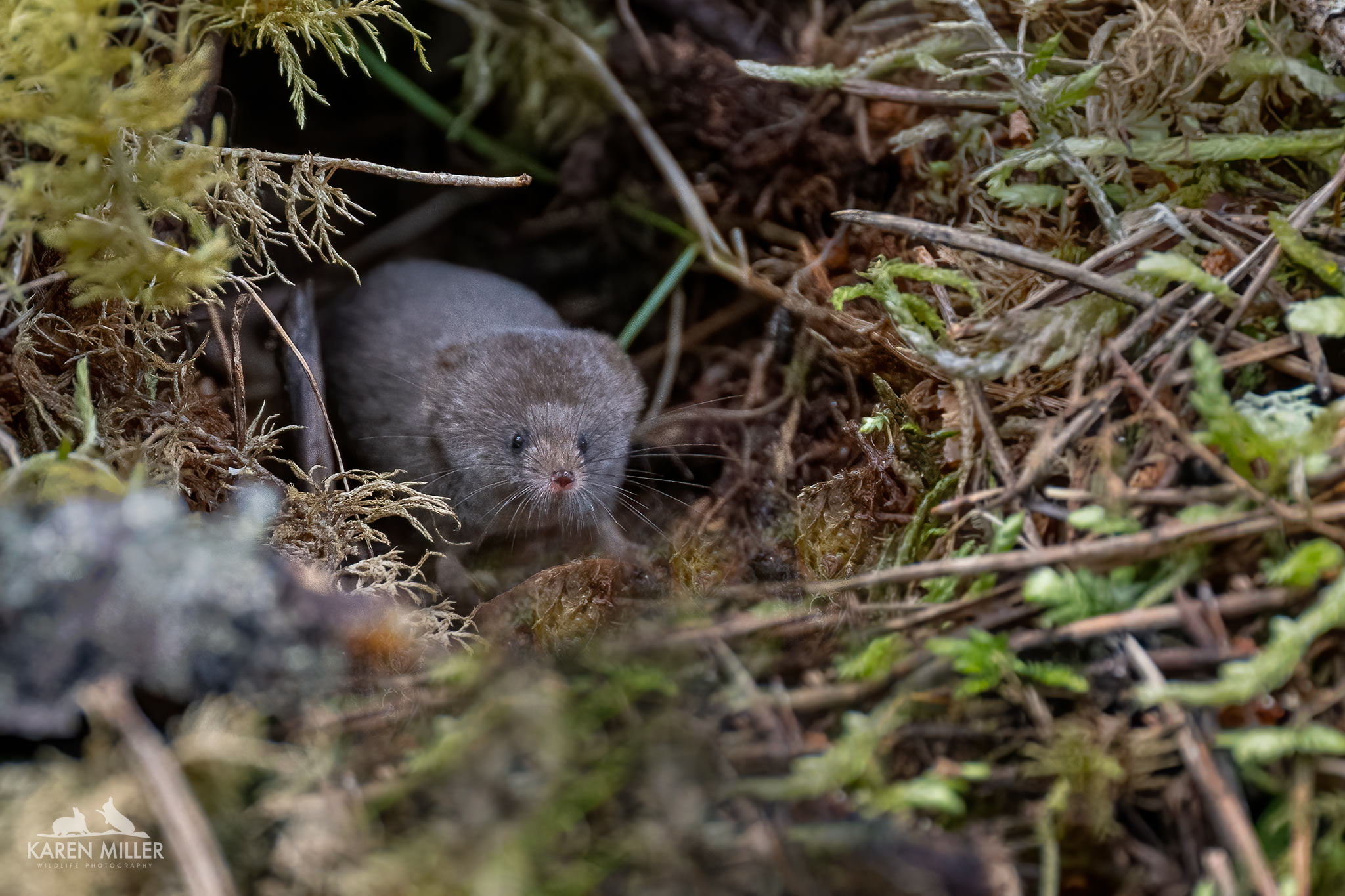
I’ve since moved from peanut butter to bird seed. Only disadvantage with this is it glows brightly in photographs. However, it’s too small to cache and, for now at least, the tits have disappeared so, other than a couple of opportunistic chaffinches (and another rodent) it’s only being scoffed by the voles.
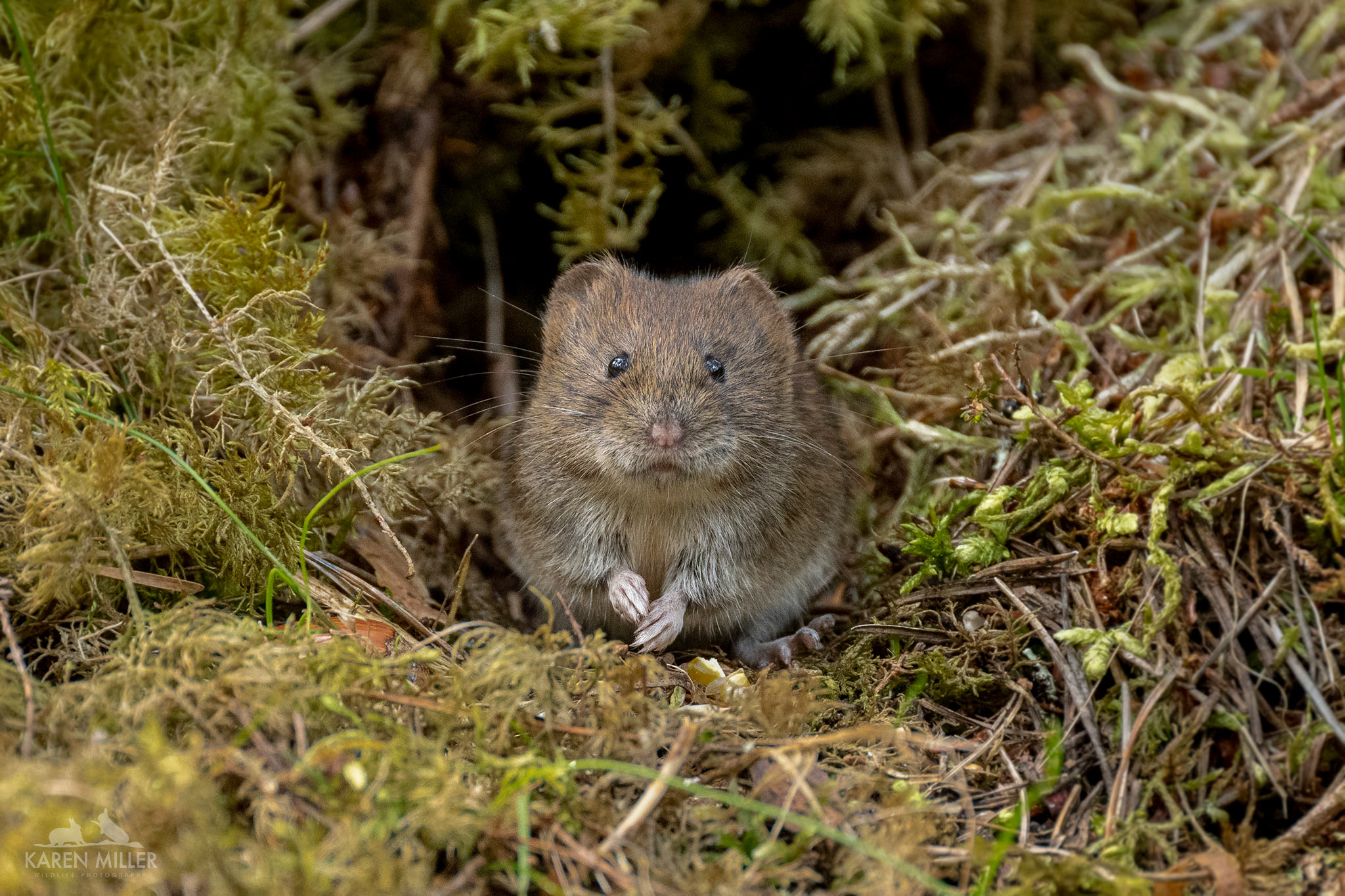
The other rodent referred to above, is a wood mouse (Apodemus sylvaticus). I’ve only seen it on one visit. Initially it was very nervous, dashing out from the vole holes, grabbing a seed and returning to safety. But as the afternoon progressed it started to stay out for longer. Their ears are disproportionately large in comparison to their bodies and they look very different from the voles. Interesting to see it coming from the voles’ home though.

This site has proved very popular over the winter. I’ve visited with clients on my winter wildlife and red squirrel therapy workshops and had photographers booking it just for cresties and / or voles. It’s currently available to book for either a guided or unguided bank vole (and whatever else appears) session. I’m still waiting eagerly for baby bank voles to appear!!
I have prints and cards available of much of the wildlife featured in this blog, and there will be a 2024 Scottish Wildlife calendar too. Please check my website for details of these and my current workshops. If there’s an image you’d like a print of that isn’t there do get in touch as I can easily add it.
During the winter months, with little available light, I was primarily photographing with my Nikon D850 (or D500) and either a 300mm F4, or 300mm F2.8 lens. Topaz denoise came in very useful for removing noise from my images.
Still to come, part 3 of my winter wildlife blogs which will feature the other species photographed over the season and some tips on what to wear for winter photography.


Absolutely beautiful photography, you’re so lucky living where you are. I’m in Coventry in a retirement complex surrounded by woodland and we get our fair share of wildlife including foxes and owls! Pretty sure we’ve got crested tits this week, plus a tree creeper all feeding on my neighbours feeder set up by her son.
Keep up the good work your site’s a joy!
regards
Alan Macdonald
LikeLiked by 1 person
Thanks Alan. I am very lucky to live where I do – it’s a real privilege. You won’t have seen a crestie down in Coventry though. They are only found in parts of the Scottish Highlands. Treecreepers are always great to see as well though!
LikeLike